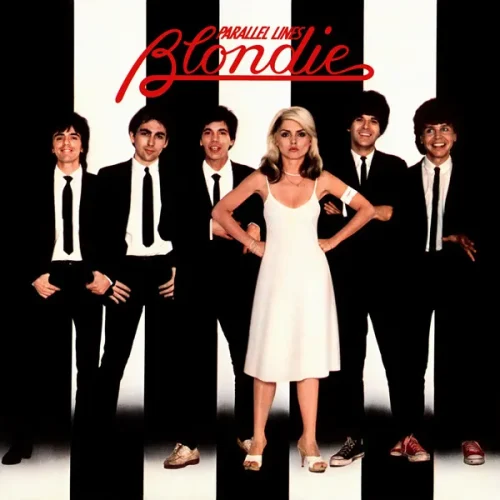Released in September 1978, Blondie’s “Parallel Lines” stands as a cornerstone of both the band’s discography and the late 1970s music scene. Positioned as their third studio album, it marks a significant evolution from the raw, punk-driven energy of their earlier work. By this point, Blondie had already made a name for themselves with their self-titled debut in 1976 and the follow-up, “Plastic Letters,” in 1977. However, it was with “Parallel Lines” that they truly refined their sound and achieved mainstream success.
In the broader music landscape, the late ’70s was a time of significant genre blending and experimentation. Disco was dominating the charts, punk was solidifying its place in the underground scene, and new wave was beginning to emerge as a fresh, innovative genre. “Parallel Lines” captures the essence of this era, seamlessly blending elements of punk, disco, and pop into a cohesive and infectious sound that resonated with a wide audience.
Artistic Intentions
Blondie’s artistic intentions with “Parallel Lines” were clear: they aimed to break free from the confines of the punk genre and embrace a more polished, commercially viable sound without sacrificing their edgy, avant-garde roots. Frontwoman Debbie Harry and guitarist Chris Stein envisioned an album that could bridge the gap between the underground and the mainstream, challenging musical boundaries while delivering chart-topping hits. Their collaboration with producer Mike Chapman was pivotal in achieving this vision. Chapman’s influence helped to hone the band’s eclectic style into a slicker, radio-friendly format, resulting in an album that is as musically adventurous as it is accessible.
Sonic Exploration
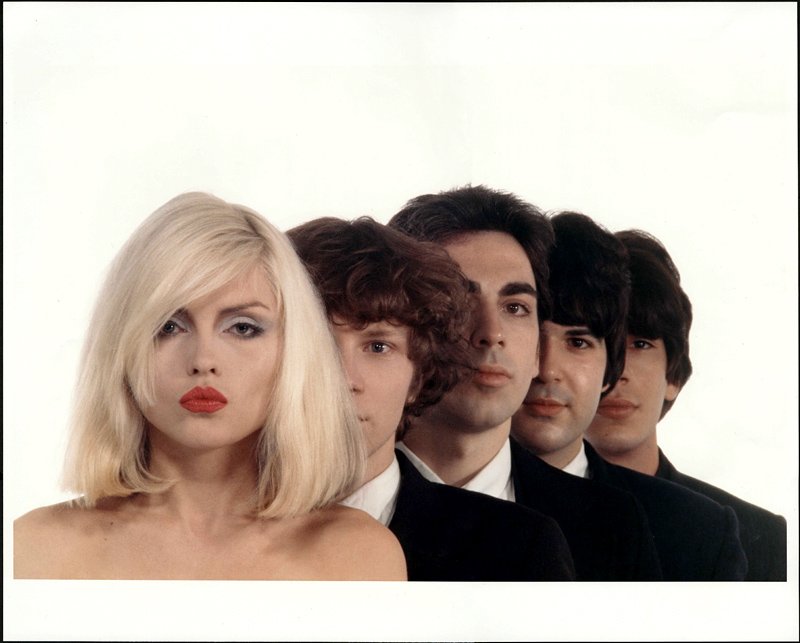
Production Quality
“Parallel Lines” is a masterclass in polished production, a deliberate departure from Blondie’s earlier, more raw recordings. Produced by Mike Chapman, the album benefits from his keen ear for detail and his experience in creating hits. The production is crisp and clean, with each instrument meticulously balanced to ensure maximum clarity and impact. This high production quality allows the intricate layers of the music to shine, providing a platform for Blondie’s eclectic influences to coalesce into a cohesive whole.
Chapman’s production style serves the album’s themes of urban sophistication and playful rebellion. The slick, polished sound aligns perfectly with the band’s move towards mainstream appeal while maintaining a sense of edginess. The clarity in production not only highlights the band’s musical proficiency but also enhances the overall listening experience, making each track distinct and memorable.
Musical Arrangements
The arrangements on “Parallel Lines” are both innovative and memorable, showcasing Blondie’s ability to blend diverse musical elements into a seamless package. The album features a rich tapestry of sounds, from the driving guitar riffs and tight drum beats to the lush keyboard lines and Debbie Harry’s iconic vocals.
One standout arrangement is in the song “Heart of Glass,” where the band fuses disco rhythms with rock instrumentation, creating a danceable yet edgy track. The use of a Roland CR-78 drum machine adds a distinctive, futuristic touch, while the swirling synths and pulsing bass line provide a hypnotic backdrop for Harry’s ethereal vocals.
Another highlight is “One Way or Another,” which features a gritty, punk-inspired guitar riff that drives the song forward. The track’s relentless energy is matched by Harry’s snarling vocals, creating an anthem of determination and defiance. The contrast between the raw guitar work and the polished production exemplifies the band’s ability to merge their punk roots with a more refined sound.
Throughout the album, Blondie experiments with various vocal arrangements, from the harmonized choruses of “Sunday Girl” to the spoken-word sections of “Fade Away and Radiate.” These creative choices keep the listener engaged and showcase the band’s versatility.
Genre Elements
“Parallel Lines” is a genre-blending triumph, seamlessly incorporating elements of punk, new wave, disco, and pop. This eclectic mix not only sets the album apart from its contemporaries but also positions it as a pioneering work in the late ’70s music scene.
The album’s punk roots are evident in tracks like “Hanging on the Telephone” and “11:59,” which feature fast tempos, aggressive guitar riffs, and a raw, rebellious energy. However, Blondie does not confine themselves to punk conventions; they expand their sonic palette by incorporating new wave and disco influences.
Songs like “Heart of Glass” and “Sunday Girl” showcase the band’s ability to craft catchy, danceable pop tunes with a sophisticated edge. The disco-infused beats and melodic hooks of these tracks helped Blondie gain mainstream success and appeal to a broader audience.
“Parallel Lines” also touches on power pop, with tracks like “Picture This” and “Just Go Away” featuring bright, jangly guitars and infectious melodies. These songs highlight the band’s knack for crafting memorable pop songs that are both radio-friendly and artistically ambitious.
Lyrical Analysis
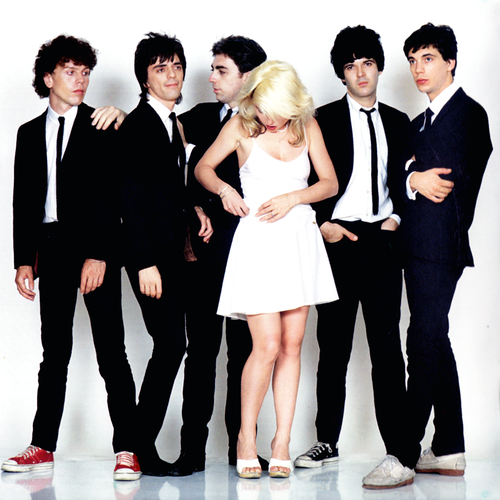
Themes and Messages
“Parallel Lines” delves into a variety of themes, with a primary focus on love, desire, and urban life. Blondie explores these themes through lyrics that range from playful and whimsical to dark and introspective. The album captures the multifaceted nature of relationships, from infatuation and longing to frustration and heartbreak.
A recurring motif is the juxtaposition of romantic idealism with gritty realism. In “One Way or Another,” Debbie Harry’s lyrics convey a sense of obsessive determination in the pursuit of love, blending humor with an undercurrent of menace. Conversely, “Heart of Glass” addresses the disillusionment and pain of a broken relationship, capturing the vulnerability and fleeting nature of romantic connections.
The urban experience is another central theme, evident in tracks like “11:59” and “Hanging on the Telephone.” These songs reflect the fast-paced, high-energy lifestyle of the city, with lyrics that evoke the urgency and chaos of urban existence. Blondie uses vivid imagery to paint a picture of life in the metropolis, blending personal narratives with broader social commentary.
Lyrical Depth
The lyrics on “Parallel Lines” exhibit a balance of straightforward narrative and poetic abstraction. Debbie Harry’s writing often leans towards a conversational tone, making the songs accessible and relatable while also embedding deeper layers of meaning for those willing to delve into the nuances.
In “Fade Away and Radiate,” the lyrics are more abstract, filled with dreamlike imagery and a sense of existential contemplation. Lines like “The beams become my dream, my dream is on the screen” suggest a blurring of reality and fantasy, inviting listeners to interpret the song’s meaning in various ways.
“Picture This” combines vivid visual descriptions with a simple, catchy chorus, creating a song that is both immediate and evocative. The lyrics capture moments of everyday life, imbuing them with a sense of romantic nostalgia and longing.
While some tracks like “Just Go Away” offer more direct and unambiguous messages, the album overall maintains a lyrical complexity that enhances its artistic depth. Blondie’s ability to blend the literal with the metaphorical gives “Parallel Lines” a rich, layered quality that rewards repeated listens.
Emotional Impact
The emotional resonance of “Parallel Lines” is one of its most compelling aspects. The lyrics contribute significantly to the album’s ability to evoke a wide range of emotions, from joy and excitement to sadness and introspection.
“Heart of Glass,” with its reflective lyrics about lost love, conveys a poignant sense of melancholy that contrasts with its upbeat, danceable melody. This juxtaposition creates a bittersweet emotional impact, allowing listeners to experience a mix of catharsis and elation.
On the other hand, songs like “Sunday Girl” and “Picture This” radiate joy and optimism, celebrating the simple pleasures of life and love. The lighthearted lyrics and infectious melodies evoke a sense of carefree happiness, making these tracks timeless anthems of youthful exuberance.
In more intense tracks like “One Way or Another,” the lyrics’ raw energy and unfiltered emotion reflect feelings of obsession and determination, creating an almost palpable sense of urgency and tension. The directness of Harry’s delivery amplifies the emotional impact, making the listener feel the intensity of her resolve.
Cohesion and Flow
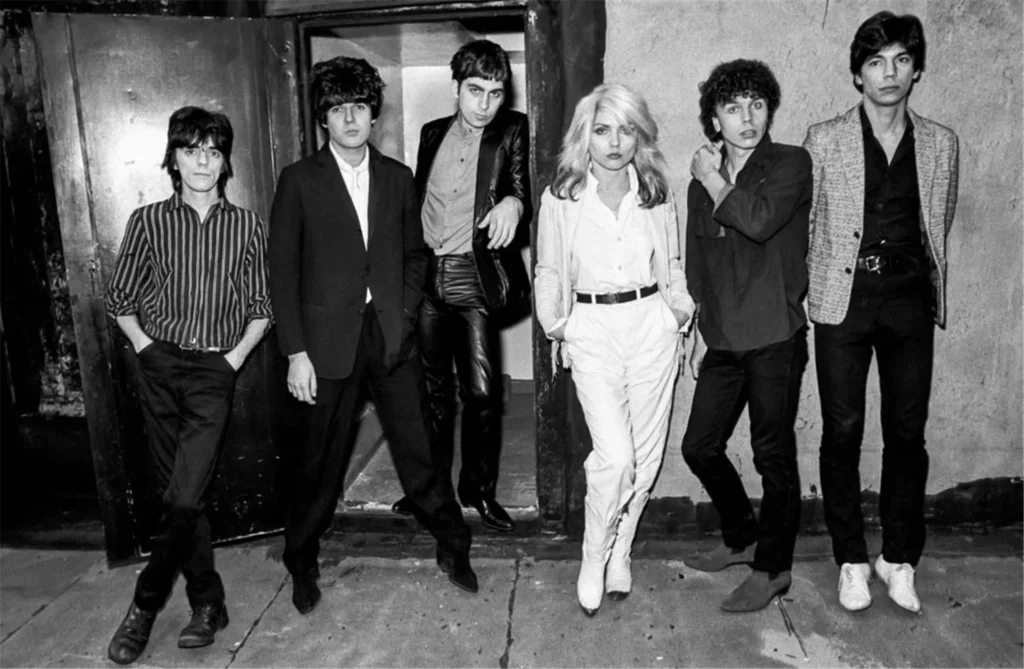
Track Progression
One of the standout features of “Parallel Lines” is its exceptional track progression, which ensures a smooth and engaging listening experience from start to finish. The album opens with the high-energy “Hanging on the Telephone,” an immediate attention-grabber that sets the tone with its driving rhythm and intense urgency. This momentum is carried through to the following tracks, with “One Way or Another” maintaining the brisk pace and injecting a dose of punk attitude.
As the album progresses, there is a noticeable shift towards more diverse musical landscapes. “Picture This” and “Fade Away and Radiate” provide a change of pace, offering listeners a moment to catch their breath while still maintaining the album’s overarching energy and vibe. The transition to “Pretty Baby” and “I Know But I Don’t Know” continues this trend, blending upbeat melodies with introspective lyrics.
Midway through the album, “11:59” and “Will Anything Happen?” bring back the raw, punk-infused energy, reigniting the sense of urgency and movement. This sets the stage for “Sunday Girl,” which serves as a bright, pop-infused interlude with its catchy chorus and lighthearted feel.
The album’s flow culminates in its final trio of tracks: “Heart of Glass,” “I’m Gonna Love You Too,” and “Just Go Away.” “Heart of Glass” serves as a climactic moment, its disco-infused sound providing a fresh yet cohesive shift in tone. “I’m Gonna Love You Too” offers a nod to rockabilly influences, while “Just Go Away” closes the album on a defiant note, ensuring that the energy is sustained right to the end.
The seamless transitions between tracks and the careful arrangement of song dynamics create a narrative and emotional arc that is both satisfying and compelling.
Thematic Consistency
“Parallel Lines” excels in maintaining thematic consistency throughout its runtime. Despite the band’s exploration of various genres and musical styles, the album remains unified by its core themes of love, desire, and urban life. This thematic thread is woven through each track, creating a cohesive work that feels thoughtfully curated and deliberately crafted.
The stylistic shifts within the album are handled with finesse, ensuring that no song feels out of place. The fusion of punk, new wave, disco, and pop elements is executed in a way that feels natural and organic, reflecting Blondie’s unique ability to transcend genre boundaries without losing their distinctive voice. For instance, the transition from the punk-driven “One Way or Another” to the disco-influenced “Heart of Glass” is handled with a finesse that underscores the band’s versatility while maintaining a cohesive sound.
Emotional consistency is also a hallmark of “Parallel Lines.” The album deftly balances moments of intensity and introspection, joy and melancholy, creating an emotional journey that resonates deeply with listeners. The playful yet assertive lyrics of “One Way or Another,” the reflective melancholy of “Heart of Glass,” and the youthful exuberance of “Sunday Girl” all contribute to a rich emotional tapestry that feels unified despite the varied tones.
Standout Tracks and Moments

Highlight Key Tracks
“Parallel Lines” is rich with standout tracks that each contribute uniquely to the album’s legacy. These songs not only showcase Blondie’s artistic evolution but also highlight their versatility and ability to craft memorable, impactful music.
“Heart of Glass”: Perhaps the most iconic track on the album, “Heart of Glass” stands out for its innovative fusion of disco and rock. The song’s hypnotic bass line, swirling synths, and Debbie Harry’s ethereal vocals create a sound that was groundbreaking at the time. Its lyrical exploration of heartbreak and disillusionment resonates deeply, making it a timeless anthem.
“One Way or Another”: This track is a quintessential Blondie song, brimming with punk attitude and infectious energy. The aggressive guitar riff, driving beat, and Harry’s snarling vocal delivery make it an instant classic. Its lyrics, which mix humor with a hint of menace, add to its compelling character.
“Hanging on the Telephone”: Opening the album with a burst of urgency, this track is a cover that Blondie made their own. The frantic pace, powerful guitar riffs, and Harry’s commanding vocals set the tone for the entire album, making it a standout opening track.
“Sunday Girl”: A departure from the album’s more intense tracks, “Sunday Girl” offers a breezy, pop-infused sound. Its catchy melody and sweet, nostalgic lyrics provide a refreshing contrast, showcasing Blondie’s ability to blend different styles seamlessly.
Memorable Moments
“Parallel Lines” is peppered with memorable moments that capture the essence of the album and highlight the band’s talent. Here are a few key instances:
The Synth Breakdown in “Heart of Glass”: Midway through the track, the song transitions into a mesmerizing synth breakdown that exemplifies Blondie’s innovative use of electronic elements. This moment not only defines the track but also underscores the band’s willingness to push musical boundaries.
The Vocal Delivery in “One Way or Another”: Debbie Harry’s vocal performance in this song is particularly noteworthy. Her ability to convey both playful flirtation and fierce determination adds a dynamic layer to the track, making it one of the album’s most compelling performances.
The Opening Riff of “Hanging on the Telephone”: The immediate, driving riff that kicks off the album is a powerful introduction, setting a high-energy tone that captivates the listener from the very first note. It’s a moment that encapsulates the raw, punk spirit of the album.
The Chorus of “Sunday Girl”: The infectious chorus of this track is a perfect example of Blondie’s knack for crafting pop hooks. The repetition of “Sunday girl” over a buoyant melody creates a moment of pure pop bliss that is both catchy and endearing.
The Bass Line in “Fade Away and Radiate”: This track features a haunting bass line that, combined with its ethereal lyrics, creates a dreamlike atmosphere. The use of this instrumental element adds depth and texture, making it a standout moment on the album.
Artistic Contribution and Innovation
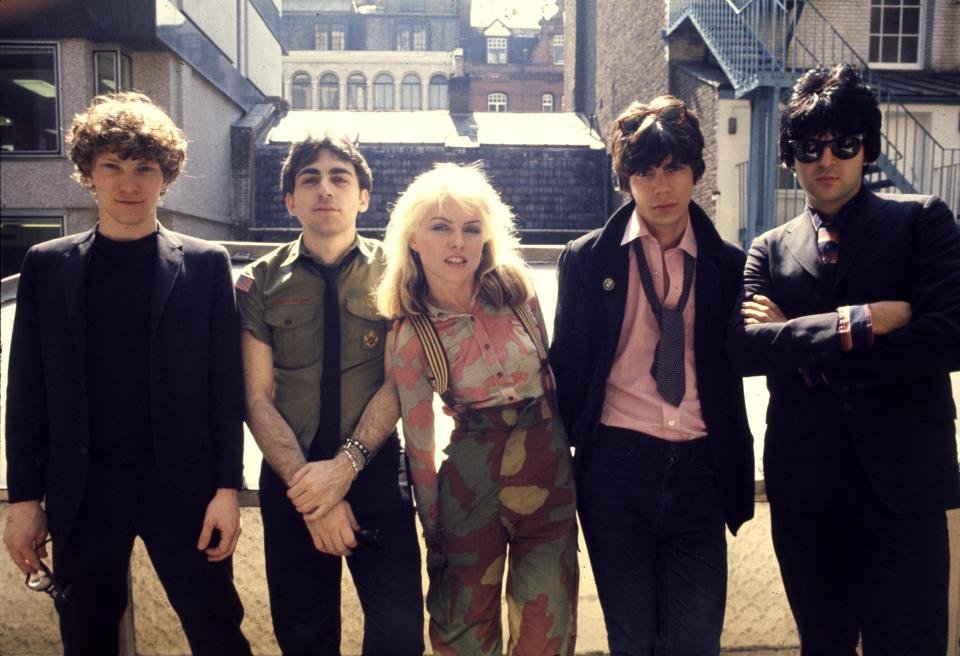
Place in Genre/Industry
“Parallel Lines” occupies a significant place in both the new wave genre and the broader music industry of the late 1970s. At a time when genres were beginning to blend and boundaries were being pushed, Blondie emerged as a leading force in the new wave movement, which combined elements of punk, pop, and disco with a fresh, modern aesthetic. This album, in particular, played a crucial role in bringing new wave into the mainstream, helping to define the sound and style of the era.
Blondie’s willingness to embrace pop sensibilities without abandoning their punk roots set them apart from many of their contemporaries. “Parallel Lines” stands as a testament to the band’s ability to balance commercial appeal with artistic integrity. The album’s success on the charts—propelled by hits like “Heart of Glass,” “One Way or Another,” and “Hanging on the Telephone”—solidified Blondie’s status as trailblazers who could seamlessly navigate between the underground and the mainstream.
Innovation
“Parallel Lines” is rife with innovative elements that contributed to its lasting impact and helped it stand out in a crowded musical landscape. Several aspects of the album showcase Blondie’s inventive approach:
Genre Fusion
One of the most groundbreaking aspects of “Parallel Lines” is its seamless blend of genres. By combining the raw energy of punk with the infectious rhythms of disco and the catchy hooks of pop, Blondie created a sound that was both unique and accessible. This genre fusion was particularly evident in “Heart of Glass,” a track that challenged traditional genre boundaries and became a defining song of the era.
Production Techniques
Under the guidance of producer Mike Chapman, “Parallel Lines” benefited from advanced production techniques that were innovative for their time. The crisp, clean production allowed each instrument and vocal layer to shine, creating a polished yet dynamic sound. The use of the Roland CR-78 drum machine on “Heart of Glass” added a distinctive electronic element that was ahead of its time, influencing future generations of musicians and producers.
Lyrical Depth and Versatility
Debbie Harry’s lyrics on “Parallel Lines” showcased a versatility that was innovative in its own right. The album’s lyrics range from the playful and humorous (“One Way or Another”) to the deeply introspective (“Fade Away and Radiate”). This lyrical diversity, combined with Harry’s charismatic vocal delivery, added a layer of sophistication to the album that set it apart from more straightforward pop or punk records.
Visual Aesthetic
While primarily an auditory medium, “Parallel Lines” also made significant contributions to the visual aesthetic of the late 1970s. The album cover, featuring the band members in black and white against a striped background, became iconic. This visual branding helped establish Blondie’s image as stylish, edgy, and modern, influencing the visual presentation of countless new wave and pop acts that followed.
Cultural Impact
Beyond its musical innovations, “Parallel Lines” had a profound cultural impact. Blondie’s embrace of diverse influences and their ability to transcend traditional genre limitations reflected broader societal shifts towards inclusivity and cross-cultural collaboration. The album’s success demonstrated that mainstream audiences were ready for more eclectic and adventurous musical experiences.
Closing Thoughts

“Parallel Lines” is a landmark album that captures Blondie at the height of their creative powers. The album’s strengths are manifold: it boasts a seamless fusion of genres, from punk and new wave to disco and pop, resulting in a sound that is both innovative and timeless. The production quality, under the expert guidance of Mike Chapman, is crisp and polished, allowing the band’s eclectic influences to shine through with clarity and precision. Debbie Harry’s charismatic vocals and versatile lyrical content add depth and emotion, making each track memorable and impactful.
The album’s standout tracks, such as “Heart of Glass,” “One Way or Another,” and “Sunday Girl,” exemplify Blondie’s ability to craft infectious melodies and compelling narratives. These songs, along with the album’s other gems, contribute to a cohesive listening experience that is dynamic and engaging from start to finish. The thematic consistency and smooth track progression ensure that “Parallel Lines” feels like a unified artistic statement, despite its stylistic diversity.
In terms of weaknesses, there are few to note. Some listeners might argue that the album’s polished production veers too far from the raw energy of Blondie’s earlier punk roots. However, this evolution in sound can also be seen as a strength, demonstrating the band’s growth and versatility.
Ultimately, “Parallel Lines” is a quintessential album that not only defined Blondie’s career but also left an indelible mark on the music industry. Its blend of genres, innovative production, and lyrical depth make it a timeless classic that continues to resonate with listeners across generations.
Official Rating
We award Parallel Lines with a 10/10 rating. This perfect rating is well-deserved, given the album’s groundbreaking impact and enduring legacy. “Parallel Lines” represents a pinnacle of artistic achievement for Blondie, showcasing their ability to innovate while crafting songs that are both commercially successful and artistically significant. Its influence can be seen in the evolution of new wave and pop music, and its tracks remain staples of classic rock and pop playlists. By pushing the boundaries of genre and production, Blondie created an album that is not only a high point in their discography but also a milestone in music history.
